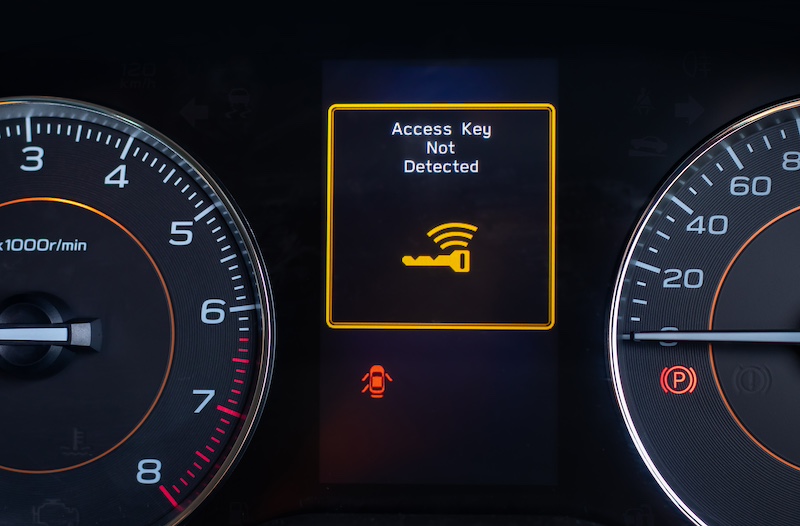
What is the Immobilizer/Anti-Theft System on an INFINITI?
The immobilizer or anti-theft system on an INFINITI is a sophisticated technology designed to prevent unauthorized operation of your vehicle. It verifies that the key to start the engine is correct. If the key is incorrect, this system blocks different actions to prevent the car from starting.
A warning light will turn on when the immobilizer system is activated on your INFINITI. If the car does not recognize the key signal, two things may happen: The engine may turn on for a few seconds and then stop, or the engine will not turn on. Depending on the electronic immobilizer system, the car’s computer will disable the fuel pump, the ignition coil, and the injectors.
Why is the Immobilizer Activated on an INFINITI?
The main reason is that the car’s computer does not recognize or detect the signal from the chip inside the key. The most common reasons as to why this happens are:
A low battery of the key or the remote control: the chip will not send the signal.
The key’s chip is damaged or has been decoded: it may happen if the key is damaged or gets wet.
Faulty electrical wiring may happen in the antenna, immobilizer unit, or the engine’s computer.
How to Reset the Vehicle Immobilizer/Anti-Theft System on Your INFINITI
Resetting the immobilizer system on your INFINITI is a straightforward process that you can do yourself.
Here are the steps:
Leave the ignition switch in the ON position for approximately 5 seconds.
Place the ignition switch in the OFF or LOCK position and wait approximately 10 seconds.
Repeat steps 1 and 2.
Restart the engine while holding the device (which may have caused the interference) separate from the registered INFINITI Vehicle Immobilizer System key.
These steps may vary slightly depending on your INFINITI vehicle’s specific model. Always refer to your vehicle’s owner’s manual for the most accurate information.
Conclusion
The immobilizer or anti-theft system installed in your INFINITI is a crucial safeguard against theft, ensuring the security of your vehicle. Familiarizing yourself with its operation and reset procedures is essential for maintaining this security. If you require assistance or have inquiries, please contact us at the Louisville INFINITI dealership. We’re dedicated to providing support and ensuring your peace of mind.

In the world of luxury automobiles, two prominent contenders, INFINITI and Lexus, vie for the coveted title of delivering the pinnacle of automotive opulence. Today, we explore this clash of titans, dissecting the nuances that set INFINITI apart as the indisputable champion at Louisville INFINITI. Let’s delve into the realms of performance, design, and innovation to uncover why, when it comes to luxury, INFINITI emerges as the triumphant choice.
INFINITI: Performance Redefined

At the heart of INFINITI’s ethos lies an unwavering commitment to performance. The lineup, featuring models like the Q50, Q60, and QX80, is a testament to precision engineering and dynamic driving experiences. The marriage of powerful engines, responsive handling, and cutting-edge technology places INFINITI as a leader in delivering thrilling performance without compromise. Louisville INFINITI invites enthusiasts to experience firsthand the exhilarating drive that defines the brand’s commitment to unparalleled performance.
Lexus: Luxurious Comfort Meets Serenity
Lexus, known for its emphasis on opulence and tranquility, has carved its niche in the luxury market. Plush interiors, refined materials, and a focus on a serene driving experience characterize Lexus vehicles. While Lexus excels in providing comfort, it faces tough competition when the pursuit is a harmonious blend of luxury and exhilarating performance.
INFINITI Interior Craftsmanship: Where Luxury Meets Precision
Step into an INFINITI, and you’ll be immersed in a world of luxury and precision craftsmanship. Sumptuous materials, meticulous attention to detail, and driver-centric designs create an environment that seamlessly combines elegance with sportiness. Louisville INFINITI showcases a range of interiors that reflect the brand’s dedication to crafting spaces where every drive feels like a refined experience.
Lexus Interior Comfort: A Sanctuary on Wheels
Lexus interiors are synonymous with comfort, offering a sanctuary on wheels where passengers can unwind and enjoy the journey. High-quality materials, advanced technology, and ergonomic designs contribute to an atmosphere of opulent relaxation. However, when the quest is for an interior that marries luxury with a sporty edge, INFINITI emerges as the frontrunner.
INFINITI Driving Dynamics: Precision in Motion
INFINITI excels in delivering a driving experience that goes beyond luxury – it’s a symphony of precision in motion. From responsive steering to exceptional handling, each INFINITI model is meticulously engineered to provide an exhilarating connection between the driver and the road. Louisville INFINITI invites enthusiasts to explore and test-drive these performance-driven masterpieces.
Lexus Driving Experience: Tranquil but Tame
Lexus excels in delivering a smooth and tranquil driving experience. The focus on comfort and refinement is evident, making Lexus a preferred choice for those who prioritize a relaxed journey. However, for those seeking an extra dose of excitement on the road, the dynamic driving experiences offered by INFINITI prove to be unmatched.
Conclusion:
In the faceoff between INFINITI and Lexus, Louisville INFINITI stands as the ultimate destination for those who demand a fusion of luxury and unbridled performance. From the exhilarating drive to the precision in craftsmanship, INFINITI emerges as the champion that seamlessly marries opulence with a passion for the road. Visit Louisville INFINITI and witness firsthand why INFINITI stands tall as the unrivaled choice for those who seek the epitome of luxury in every drive.
Are you wrestling with the exasperation of your car overheating? Worry not, as unraveling the root cause of this issue is often the key to resolving it. In this article tailored for Louisville INFINITI, we’ll delve into common reasons behind car overheating, including coolant and radiator issues, faulty thermostats, worn-out water pumps, and cooling system problems.
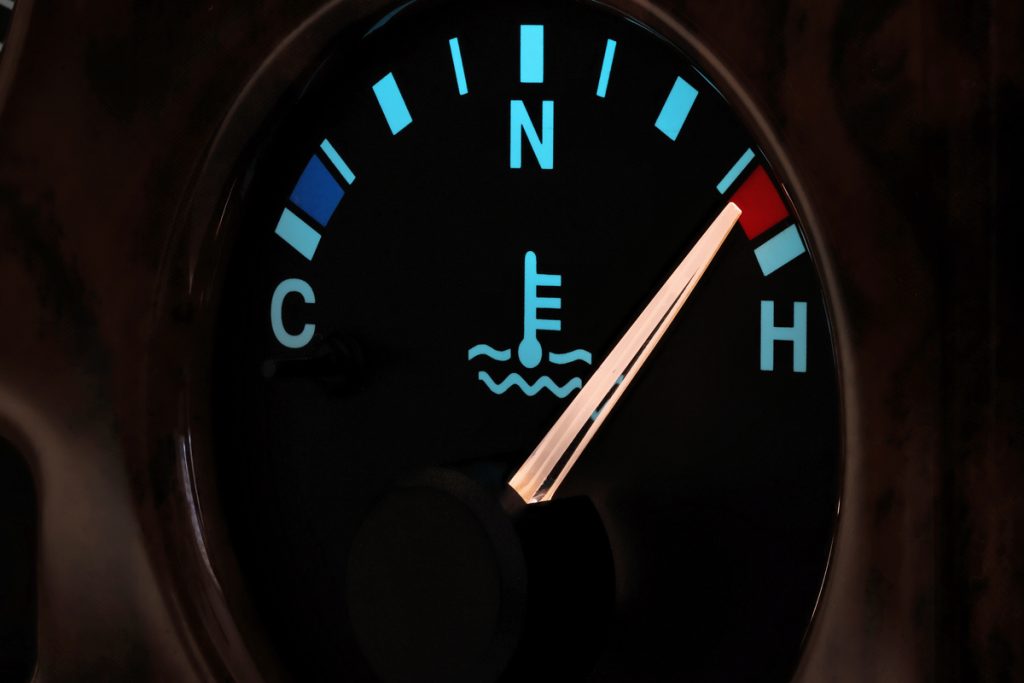
Unveiling the Causes of Car Overheating
When your engine runs too hot, it raises concerns about potential engine damage or failure. Timely identification and resolution of the overheating issue are crucial.
Faulty Hoses, Blocked Vents, and Thermostat Malfunction
Faulty hoses, blocked vents, and thermostat malfunctions are common culprits behind overheating. Cracks in rubber hoses can lead to coolant leaks, causing a shortage of fluid and increased engine temperature. Ventilation blockages prevent effective air escape, contributing to overheating. A malfunctioning thermostat may fail to open properly, hindering coolant flow to the radiator.
To diagnose overheating, visually inspect major components like belts, hoses, fans, and radiators for wear or damage. Regularly check coolant levels, and conduct a test drive to rule out other issues. If temperatures remain extreme, seek professional help for a comprehensive inspection.

Coolant and Radiator Issues
Coolant and radiator problems are often at the heart of car overheating. Leaking hoses or a blocked radiator can lead to coolant shortages and reduced heat dissipation, respectively.
Regularly check coolant and radiator levels, inspecting hoses for damage. Ensure radiators are free from debris, and promptly address leaks or blockages. Periodic maintenance, including flushing old coolant and using approved antifreeze, helps prevent severe issues.
Faulty Thermostat
A faulty thermostat can disrupt the cooling system, contributing to overheating. Check fan belt tension for optimal air flow and inspect radiators for obstructions. The thermostat regulates coolant temperature; a malfunction can impede flow, resulting in elevated temperatures.
Monitor your vehicle’s operating temperature gauge and consult a mechanic if temperatures remain high. Replacing a faulty thermostat restores normal operation and prevents further damage.
Worn-Out Water Pump
A worn-out water pump can compromise engine operation, causing overheating. The water pump circulates coolant to maintain a stable temperature. Damaged seals or hose blockages can reduce coolant circulation, leading to increased temperatures.
Check for leaks, hose blockages, and worn seals. Verify fan functionality for efficient temperature regulation. If issues persist, consult a professional mechanic for swift diagnosis and effective repairs.
Cooling System Problems
Inefficient cooling systems pose a risk of serious engine damage. Leaking hoses and faulty fans are common issues leading to overheating.
Inspect all cooling system components regularly, checking hoses, radiators, water pumps, and thermostats for wear. Secure hoses tightly, replace damaged fan belts, and monitor warning lights. Ensure sensors function properly, and address faulty wiring or loose connections promptly.
Frequently Asked Questions
How much does it cost to fix a car overheating issue?
Costs vary based on the underlying issue. Regular maintenance, including checking hoses and belts, can help avoid expensive repairs. For complex problems, labor costs range from a few hundred to several thousand dollars.
What are the long-term effects of an overheating car?
Allowing a car to overheat can cause serious engine damage, including warping and cracking of components, coolant leaks, and subsequent problems. Prompt action is essential to prevent costly repairs.
Should I attempt to fix an overheating car myself?
While DIY repairs can be cost-effective, they carry risks of incorrect execution and further engine damage. Weigh the costs, consider repair complexity, and assess necessary tools and experience.
What safety precautions should be taken when dealing with an overheating car?
Ensure safety by stopping in a secure area away from traffic. Identify symptoms, check coolant levels, and never open the radiator cap when the engine is hot. If uncertain, contact a qualified mechanic for advice.
How can I prevent my car from overheating in the future?
Prevention involves regular checks of coolant levels, hoses, and vents. Address leaks promptly, monitor external factors affecting heat buildup, and adhere to manufacturer guidelines for fluid levels and types.
Conclusion
Understanding the intricacies of car overheating is the first step toward ensuring a smooth and trouble-free journey. Whether you’ve identified a simple issue like low coolant levels or a more complex challenge with the thermostat or water pump, prompt action is your vehicle’s best ally.
At Louisville INFINITI, our expert technicians stand ready to decode and resolve any car overheating dilemma. Your safety and the longevity of your vehicle are our top priorities. Don’t let overheating issues linger—bring your car to Louisville INFINITI for meticulous service and efficient solutions. Experience the difference of Louisville INFINITI’s dedicated service. Schedule your appointment today and let us keep your vehicle running cool and reliable on every journey!
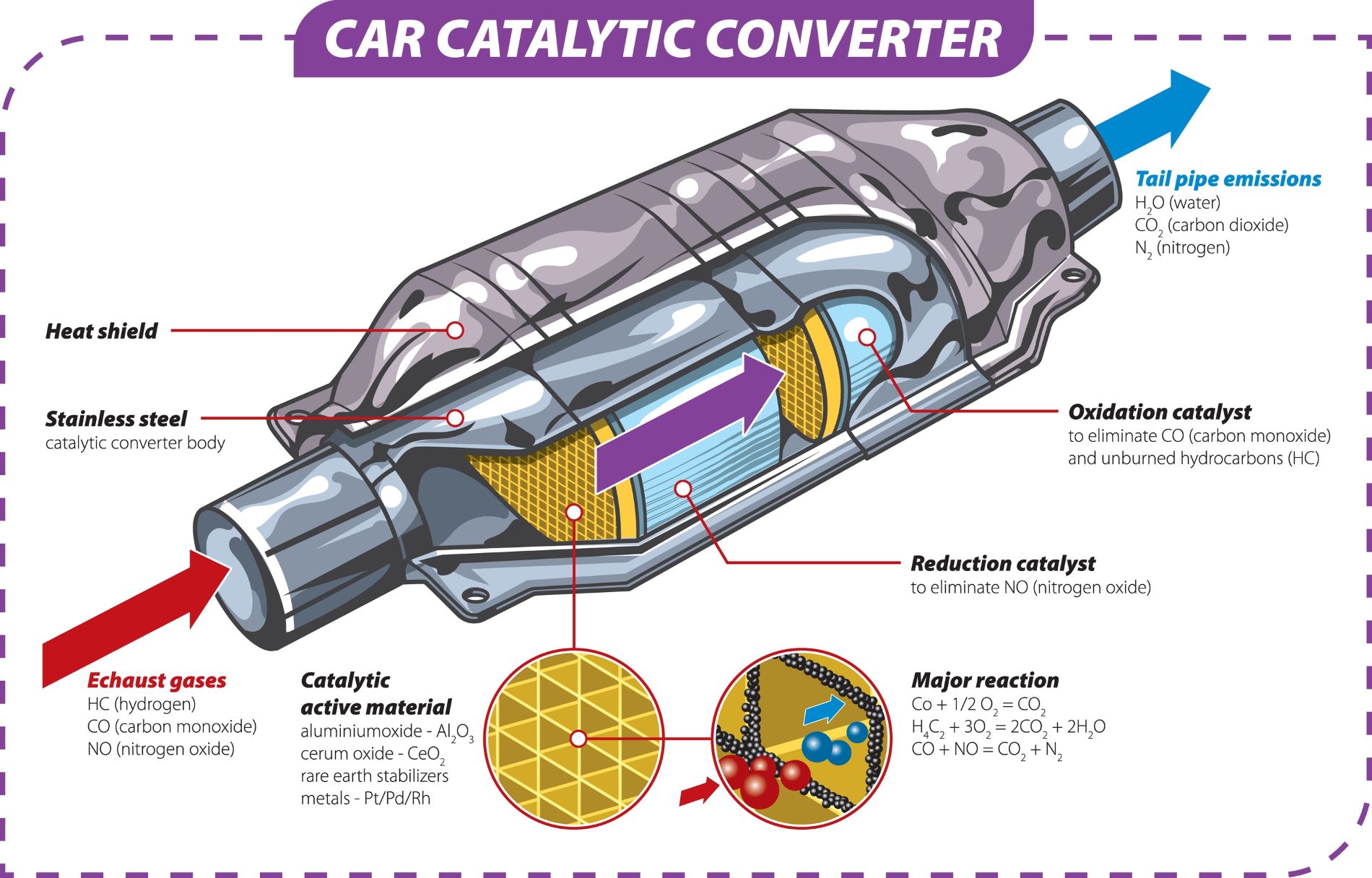
Are you concerned about having your car’s catalytic converter stolen? It’s not an unfounded worry; catalytic converter theft has been on the rise for the past few years. But don’t worry – there are certain cars that are less likely to be targeted.
In this article, we’ll go over what makes a car more vulnerable to theft, which cars are less likely to have their catalytic converters stolen from, and what to do if your catalytic converter is stolen. So let’s get started!
Click here to learn more about what to do if your catalytic converter is stolen.
Catalytic converters play an important role in a car’s emissions system, which makes them a desirable target for thieves. They contain precious metals like palladium and rhodium that can be sold for a high price, making them a lucrative target.
Knowing which cars are most vulnerable to catalytic converter theft and how to deter thieves is key to keeping your car safe.
Overview of Catalytic Converter Theft
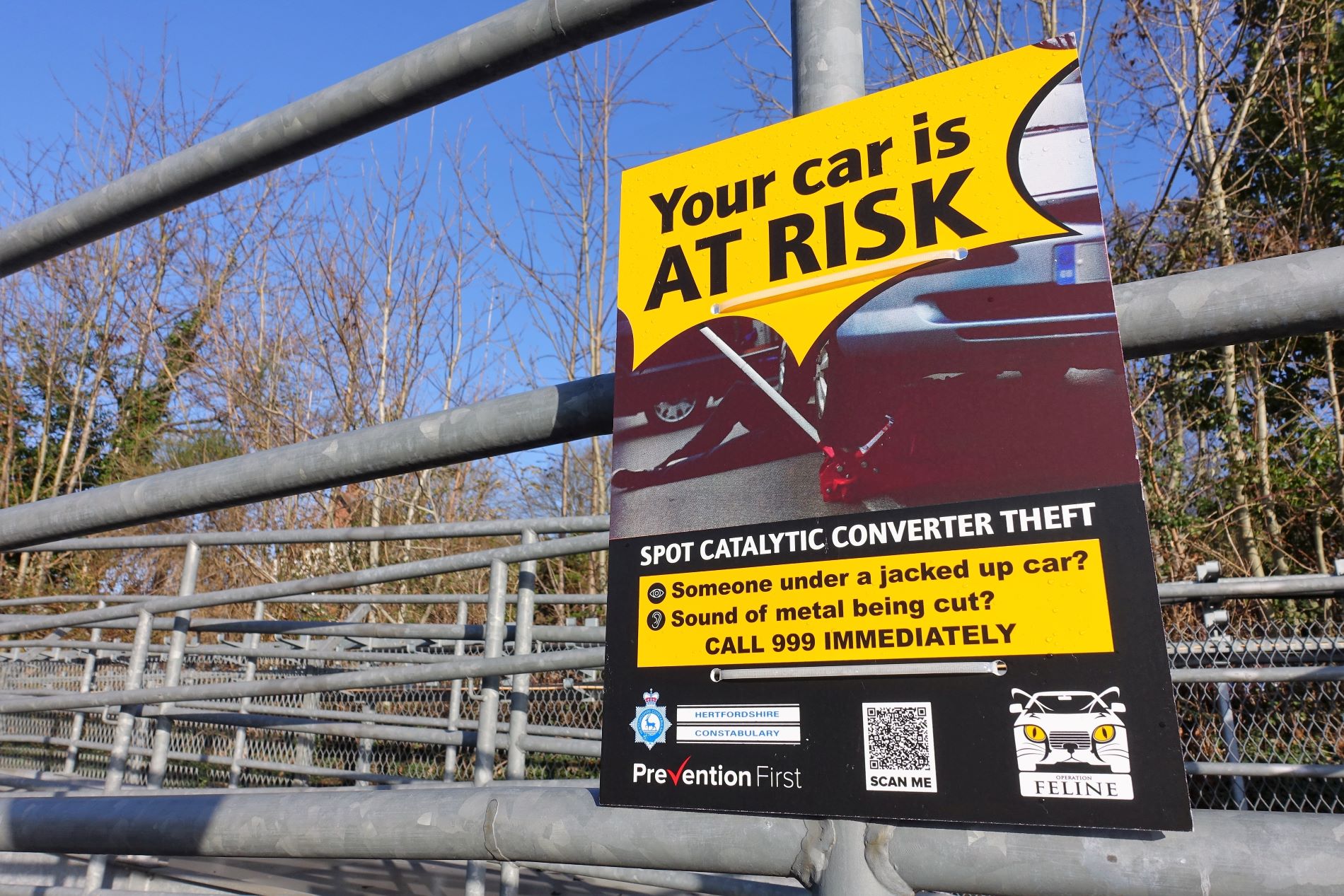
You might be surprised to learn of the prevalence of catalytic converter theft, but understanding the overview of the problem is a critical first step.
Catalytic converters are essential parts of vehicles as they help to reduce air pollution and meet environmental standards. Unfortunately, they are also a target for theft due to the precious metals they contain, such as platinum, palladium, and rhodium. This means that the trend of catalytic converter theft is on the rise, with thefts occurring in both urban and suburban areas.
The most common way that catalytic converters are stolen is through thieves cutting the part from the underside of the vehicle. This can be done quickly and efficiently with the right tools, making it difficult for law enforcement to catch the culprits. Moreover, the parts are often sold to scrap yards or exported to countries where they can be resold for a profit.
Additionally, the cost of replacing the part can be extremely expensive, as it requires the expertise of a mechanic and specialized tools. It’s important to understand the risk of having your catalytic converter stolen and the measures that can be taken to prevent it.
Some measures include parking in well-lit areas, installing security cameras, and using anti-theft devices. Additionally, some vehicles are less prone to theft than others due to their design, so it’s important to research which cars are least likely to have their converters stolen.
Click here to learn more about how to prevent catalytic converter theft.
What Makes Cars More Vulnerable?
When it comes to preventing catalytic converter theft, certain vehicles are more vulnerable than others. To understand what puts a car at risk for this type of crime, it’s important to consider the following factors:
Accessibility:
Cars with a low ground clearance are easier to access, as thieves don’t need a jack or other equipment to get to the converter. The catalytic converter is usually located close to the engine, making it easier to access cars with the engine located closer to the ground.
Security:
Cars with less security features are more vulnerable, as thieves can access the catalytic converter faster.
Visibility:
Cars and trucks that are parked in areas with low visibility are more likely to be targeted by thieves.
The best way to minimize the risk of catalytic converter theft is to ensure that the car is parked in a visible, well-lit area and that anti-theft features, such as alarms, are in place. Additionally, it’s important to keep an eye out for suspicious activity in the area and to report any suspicious behavior to the police.
Which Cars are Less Likely to be Targeted?
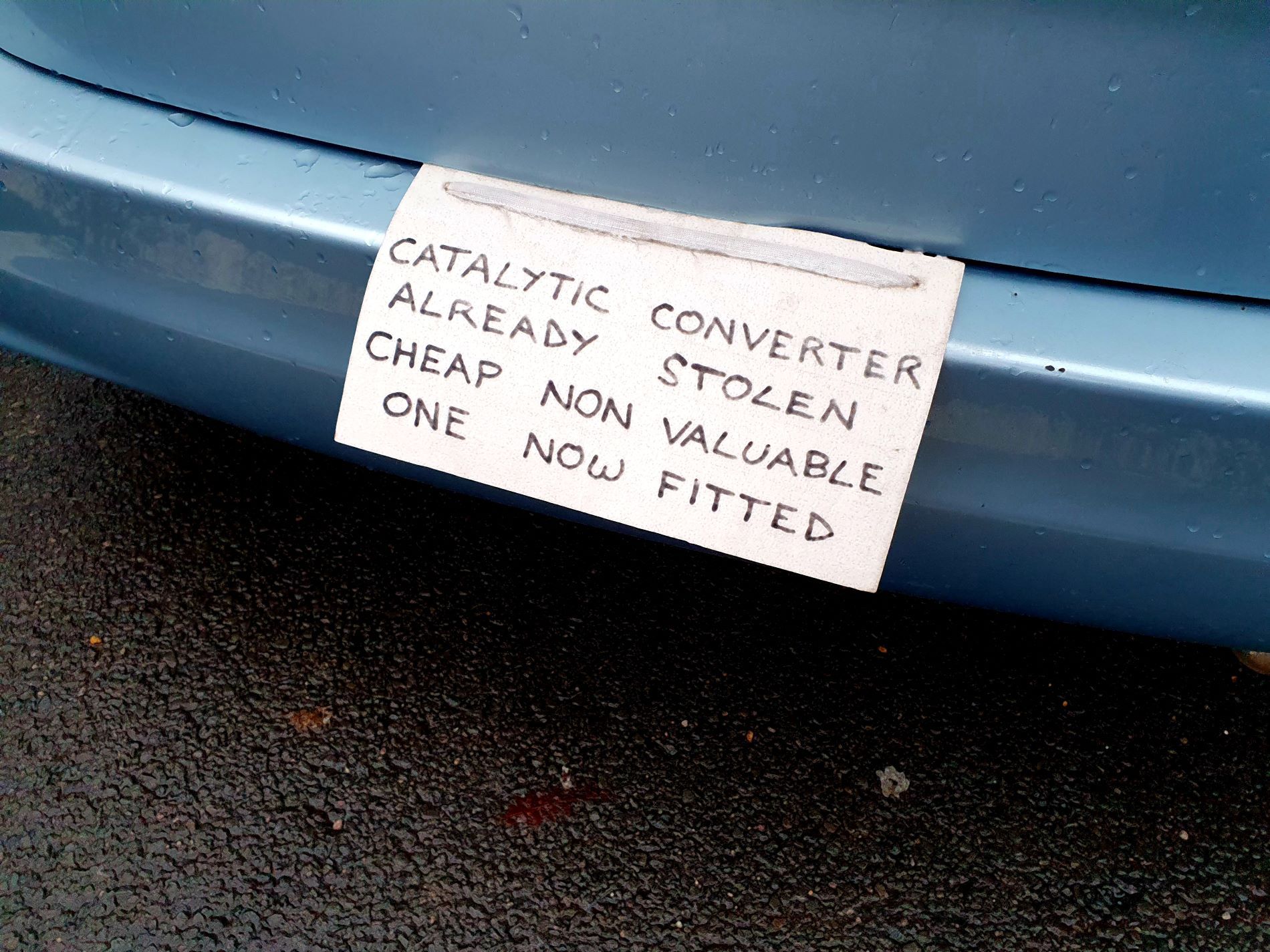
If you want to minimize the risk of your car being targeted by catalytic converter thieves, make sure it’s parked in a visible, well-lit area and equipped with anti-theft features.
Additionally, some cars are naturally less likely to be targeted by thieves. For instance, cars with a low ground clearance may not be attractive to thieves because they can be more difficult to access.
Newer model cars are often less desirable to thieves as they may have more advanced security features, such as a built-in GPS tracking system, that can make it easier to trace a stolen part. Older model vehicles are also unlikely to be targeted by catalytic converter thieves, as they are often too outdated to be of any use to the thieves.
This is because they may be too worn down or have components that are incompatible with newer vehicles. Additionally, cars with a manual transmission may also be less likely to be targeted, as the part is often harder to access and remove.
No matter what kind of car you have, it’s important to take steps to protect it from theft. Installing an alarm system can help deter potential thieves, as well as making sure the car is parked in a secure location.
Additionally, it’s always a good idea to keep an eye on your vehicle and take note of any suspicious activity. Taking these steps can help make sure your car is safe and secure from catalytic converter theft.
Click here to learn more about where the most catalytic converter thefts occur in Louisville, KY.
Ways to Deter Thieves
Protecting your vehicle from catalytic converter theft is essential, and there are steps you can take to deter thieves. Here are a few things you can do to protect your car:
Install an alarm system and security lights.
2. Park in well-lit areas.
3. Invest in a catalytic converter lock.
4. Install a visible anti-theft device.
It’s also important to stay aware of your surroundings and take extra precaution when parking in unfamiliar areas. Keep an eye out for suspicious activity and report any suspicious behavior to the local police.
Taking these steps can help you protect your vehicle and make it less of a target for catalytic converter theft.
What to Do If Your Catalytic Converter is Stolen
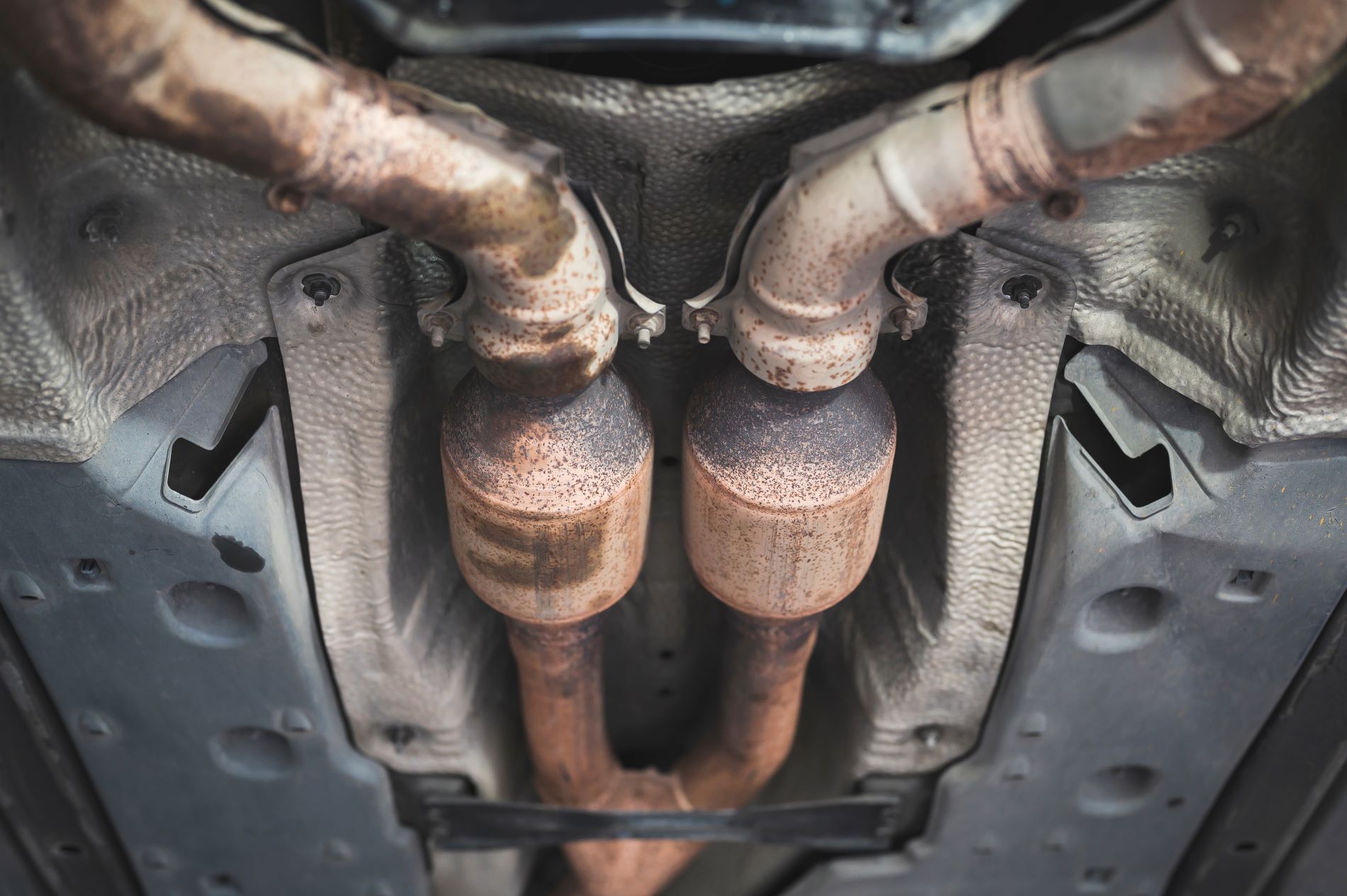
It’s a devastating feeling when you discover your catalytic converter has been stolen, but there are steps you can take to recover from the incident.
The first thing you should do is contact your local police department and file a report. Make sure to provide any details you can about when and where the theft occurred.
You should also contact your insurance company and determine if your policy covers the cost of replacing the catalytic converter. If coverage is available, you will need to provide the details of the theft and the cost of the replacement.
If your insurance policy does not cover the cost of replacing the catalytic converter, you may need to pay for it out of pocket. To save money, you may want to shop around for the best price on a new catalytic converter.
You can also look into the possibility of buying a used catalytic converter to replace the one that was stolen. Be sure to have a professional install it, as it requires special tools and knowledge.
If you’re able to, you may also want to invest in additional security measures to help protect your car from future theft. Consider adding a steering wheel lock or an alarm system to your vehicle. Taking these precautions can help deter thieves in the future and provide you with peace of mind.
Frequently Asked Questions
What is a catalytic converter and what does it do?
You may have heard of a catalytic converter, but do you know what it does?
It’s an important part of your car’s exhaust system that helps reduce harmful pollutants from entering the environment.
It does this by converting the pollutants into less harmful substances, such as carbon dioxide, water vapor, and nitrogen.
It’s important to take care of your catalytic converter, as it can be a target of theft due to the valuable metals inside.
What kind of damage can be caused by having a catalytic converter stolen?
Having a catalytic converter stolen can cause you a lot of trouble. The converter helps reduce emissions from your car and is an essential part of your vehicle’s exhaust system.
Without it, your car will start to run rough and inefficiently, as well as be louder than normal. You may also experience decreased fuel economy and power, and eventually your car may not even start.
Replacing a stolen catalytic converter can be very expensive, so it’s best to take steps to avoid theft in the first place.
How can I tell if my catalytic converter has been stolen?
It can be difficult to tell if your catalytic converter has been stolen.
You should inspect the area around your car’s exhaust system, looking for any signs of tampering.
Additionally, listen for a louder-than-normal engine noise when you start the car, as this can indicate the catalytic converter has been removed.
If you suspect your catalytic converter has been stolen, contact your local law enforcement and have them investigate.
Are there any special security measures I can take to protect my car from catalytic converter theft?
Protecting your car from catalytic converter theft is a top priority for many drivers. The best way to protect your car is to purchase a security device designed specifically for catalytic converter theft deterrence.
There are several options available, such as a catalytic converter cage or a security lock, which are designed to make it difficult for thieves to access and steal your catalytic converter. Consider having your car parked in a well-lit area or a secure, enclosed parking lot.
It’s also wise to install a car alarm and keep a record of your car’s serial number in case your standard catalytic converter part is stolen. Taking these steps can help ensure your car is safe from catalytic converter theft.
How much does it cost to replace a catalytic converter?
Replacing a catalytic converter can be expensive, depending on the make and model of your car. It can cost anywhere between $200 and $2,000, and if you purchase a direct-fit catalytic converter, that can cost you even more.
Labor costs can also add up, and you may need to pay for additional exhaust system components as well. It’s important to keep your car secure and get regular check-ups to help avoid the need for costly catalytic converter repairs.
Models With The Highest Rate of Catalytic Converter Theft:
Toyota Prius
Honda Accord
Honda CR-V
Toyota Tacoma
Ford F Series Truck
Subaru Forester
Toyota Camry
Ford Econoline
Ford Explorer
Nissan NV
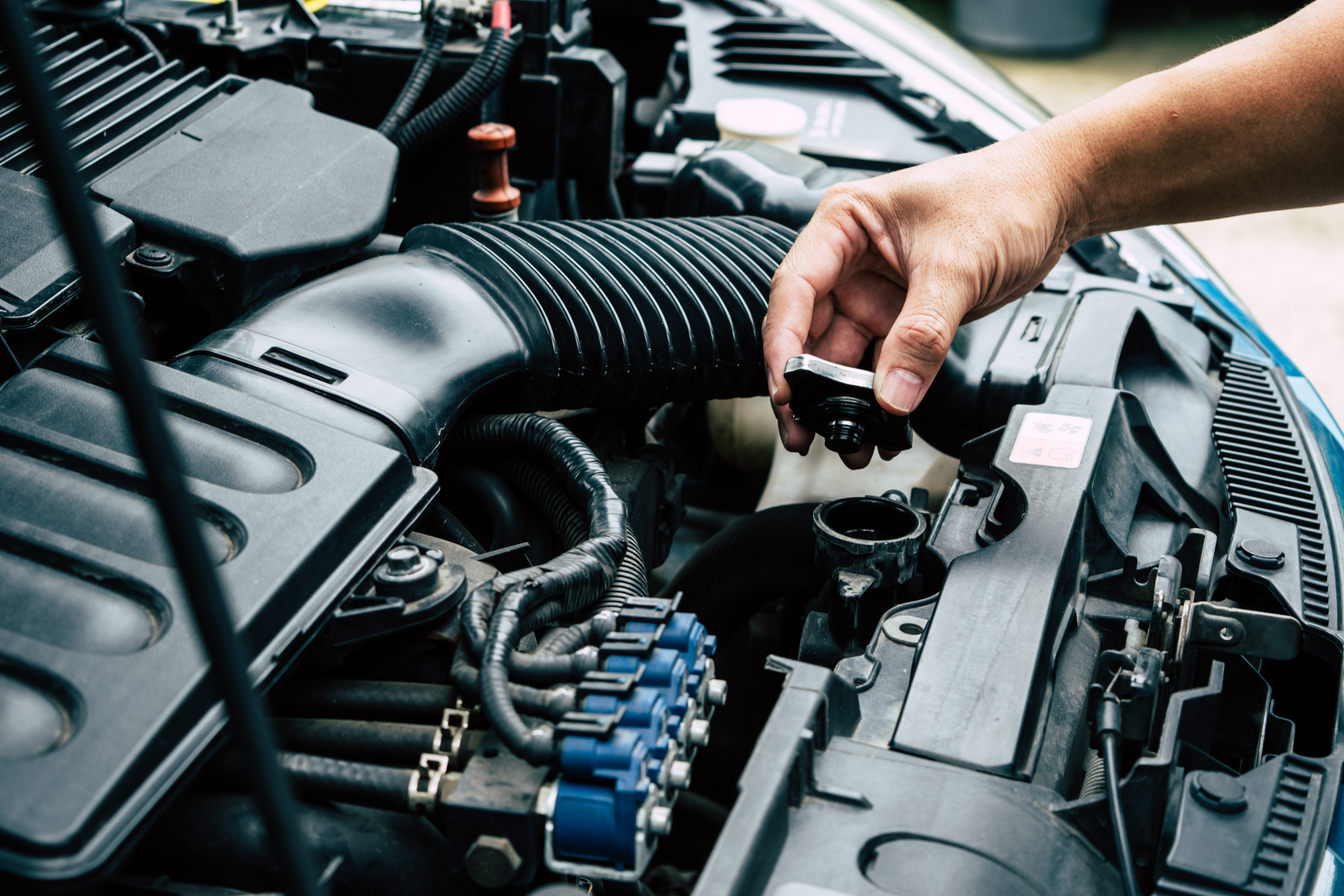
Are you wondering why your radiator is leaking? It can be a stressful situation, but don’t worry! There are several possible causes and fixes for this issue.
In this article, we’ll go over the steps needed to determine what’s causing the leak and how to fix it. We’ll discuss inspecting the radiator for damage, identifying potential causes, tightening connections, replacing various components if necessary, and refilling coolant.
With these tips in hand, you’ll be able to diagnose and repair your radiator leak quickly and effectively.
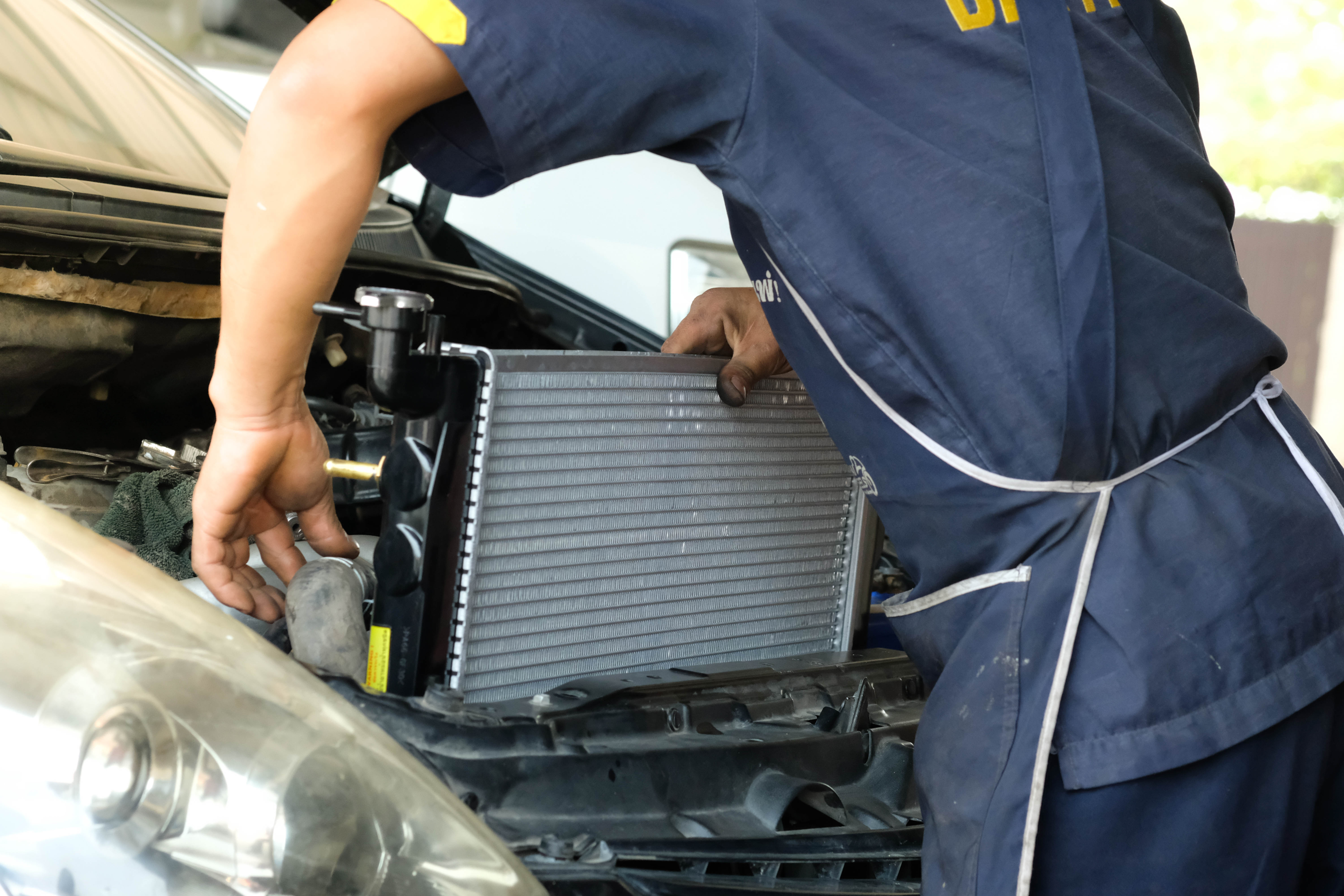
Assessing the Damage
Before you can fix the issue, it’s important to assess the damage.
There are a few basic steps to assessing a leaking radiator.
Begin by examining signs of leakage such as water stains and rust on the floor or walls near the radiator.
If present, these signs will help you determine where and how much of a leak there is.
Next, test the levels of coolant in your radiator using an antifreeze tester.
This will let you know if there’s enough coolant in your system and if it’s protecting against freezing temperatures.
You should also monitor the temperature of your radiator periodically to ensure that it’s not running too hot or too cold.
Lastly, inspect your radiator for any cracks or loose connections that could be causing leaks and use sealant to repair them if needed.
Monitoring pressure levels is also important when assessing a leaking radiator; if they’re too high, this could cause additional issues down the line.
By following these steps, you can properly assess your leaking radiator and take measures to fix it safely and effectively.
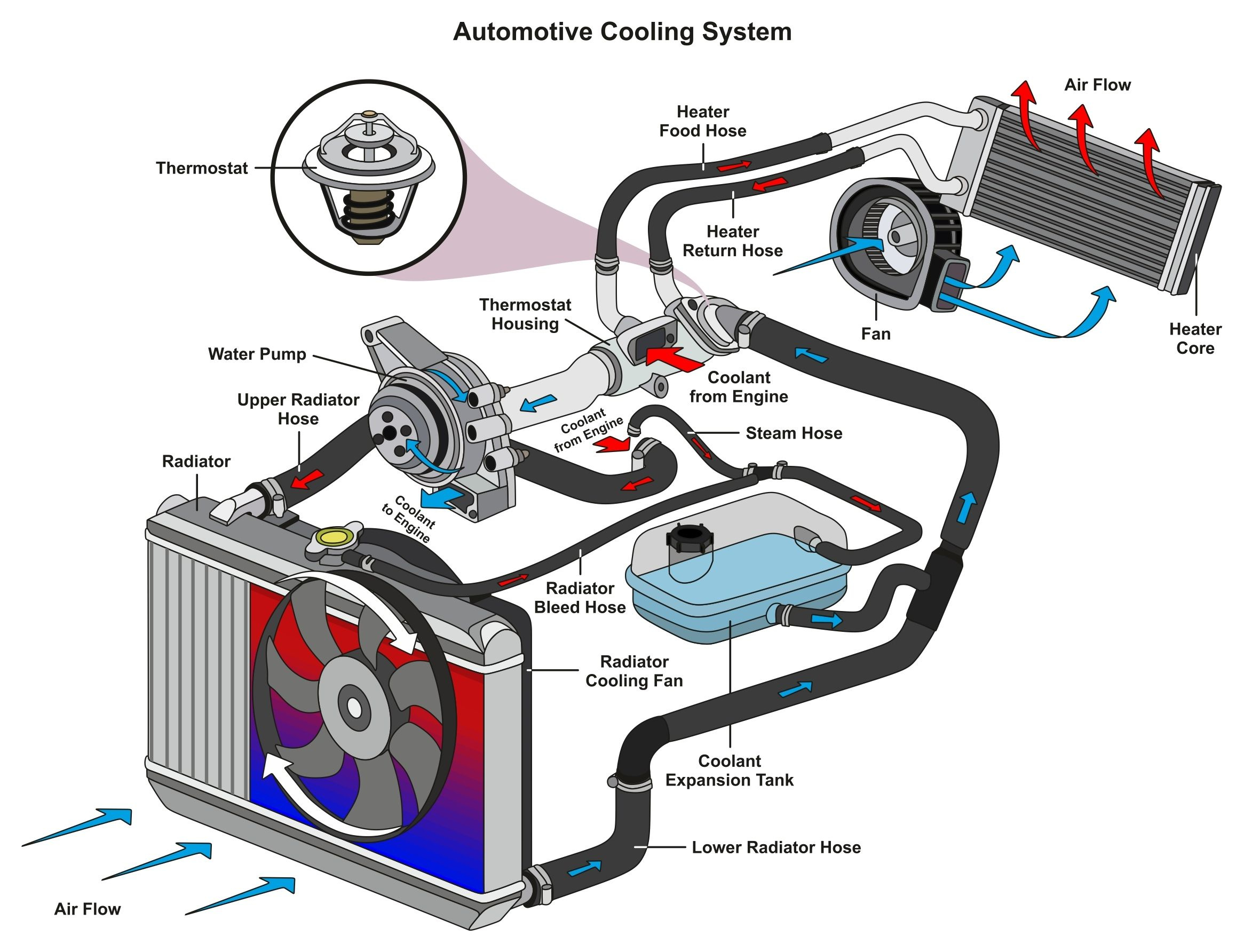
Identifying the Cause
Identifying the source of the problem is essential to finding a lasting solution.
To begin investigating leakages, it’s important to inspect seals and evaluate pressure within the radiator. Inspecting valves for corrosion or dirt buildup can help determine if there are any blockages that are causing the leakage. Additionally, replacing gaskets may be necessary if they’ve become worn or brittle over time.
To ensure a successful repair job, it’s important to take all steps necessary when identifying the cause of leaks in radiators. This includes examining all components of the radiator itself such as hoses, pipes, and connections to assess their condition and determine whether they need repair or replacement.
It’s also important to check for any loose bolts or screws that may be allowing air into the system, which can cause an increase in pressure and result in leaking from weak spots such as seams or joints. Any signs of rust should also be addressed by cleaning off affected areas before attempting further repairs.
Make sure to identify where and what is causing the radiator leak
In addition to assessing any physical damage, it’s necessary to run a series of tests on both the radiator and its associated parts. This includes checking pressure levels and testing for coolant levels as well as performing a thorough visual inspection on all components of the radiator system including valves, gaskets, and other fittings.
Once these tests have been completed, any faulty parts should be replaced with new ones as soon as possible in order to avoid further damage being caused by leaking fluids or air infiltration into sensitive areas of your radiator system.
Finally, once you’ve identified what’s causing your radiator leak, it’s time to start looking at potential solutions such as repairing existing components or replacing them altogether with new parts if needed. Doing so will help ensure that your radiator remains functioning correctly and safely while providing you with peace of mind knowing that your costly repairs were worth it in the long run!
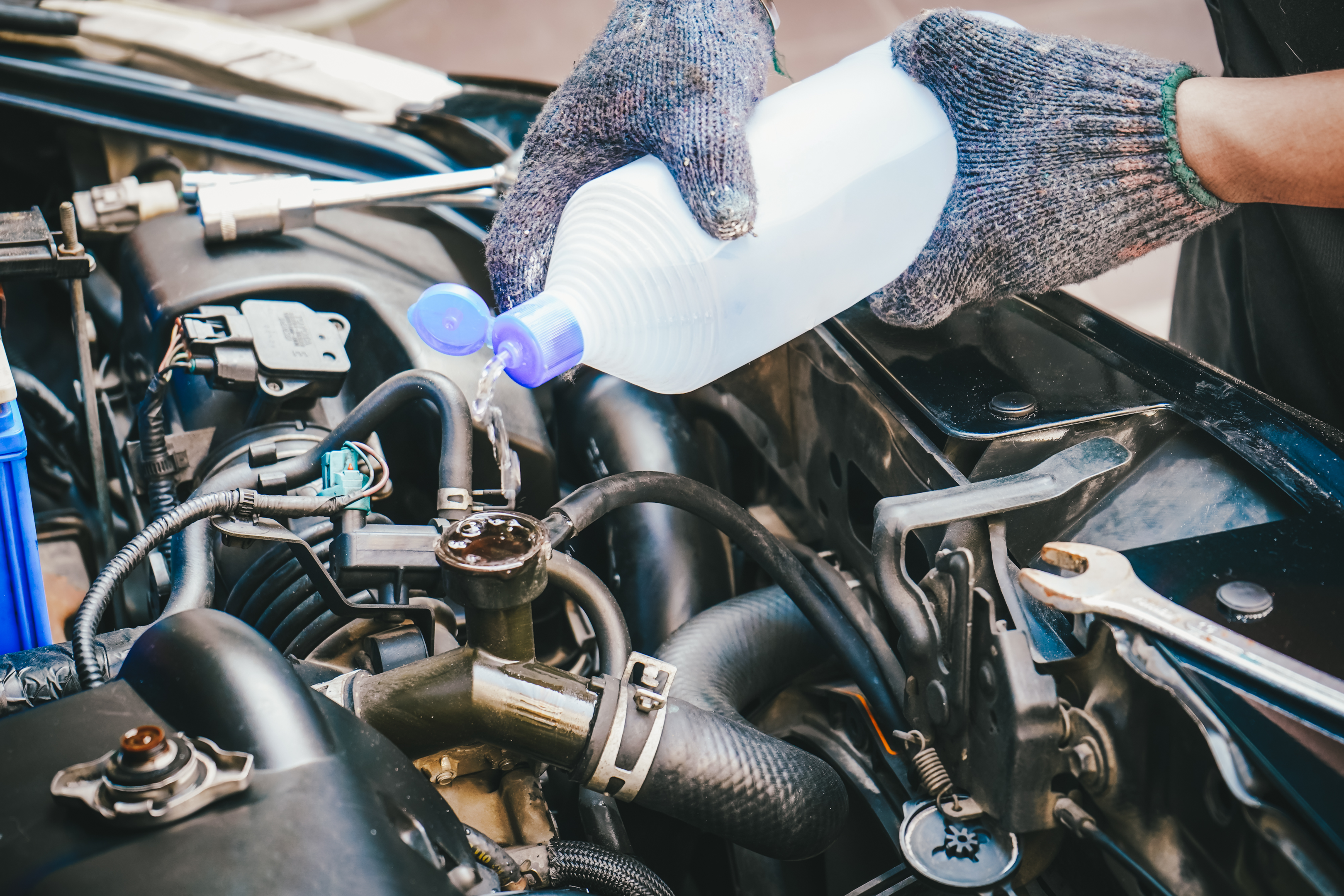
Checking for Corrosion
Don’t let corrosion compromise your radiator’s performance – check for signs of rust and dirt buildup today! Testing tools like a voltmeter or multimeter can help you determine the extent of corrosion in your radiator.
Inspecting the valves, pipes, and coolant should also be done as part of this process. If you find any signs of rust, dirt, or other contamination on these parts, then it is time to add sealant to protect them from further damage.
When inspecting the valves and pipes, be sure to look for any blockages or leaks that may have been caused by corrosion. If you have an older radiator with metal components, these should be checked for any signs of wear and tear due to age and use.
Make sure corrosion does not cause a coolant leak in your car radiator
Be sure to apply sealant generously around all connected components as this will help keep out contaminants that could lead to further damage. In addition to adding sealant, checking for loose connections is important when dealing with corroded radiators.
Loose connections can cause air bubbles which reduce efficiency and can even lead to overheating if not addressed quickly enough. Make sure all bolts are secure before adding new sealant and re-connecting the radiator hoses back into place.
Finally, it’s always a good idea to flush the system after completing repairs on a corroded radiator. This will help remove any old fluids or debris that may have collected inside over time which could otherwise cause additional problems down the line.
Flushing helps restore your system’s functionality, so make sure it gets done after every repair job!
Tightening Connections
After inspecting the valves and pipes, it’s critical to ensure all connections are firmly tightened in order to prevent air bubbles and overheating. To ensure a successful repair job, it’s important for homeowners to check for leaks by:
Examining each joint connection and pipe valve with a flashlight and mirror.
Looking for any signs of leakage or corrosion.
Checking the tightness of each nut and bolt.
Replacing gaskets if necessary and tightening the nuts with an adjustable wrench.
Testing pressure levels with a water pressure gauge while keeping an eye out for any drips or leaks that occur during the process.
It’s also important to consider hiring a professional plumber if you’re uncomfortable doing this work yourself as they have more experience with making these kinds of repairs and can get your radiator back up and running quickly without risking further damage or injury.
With their expertise, they will be able to identify any other areas where problems may arise due to loose connections or worn out parts that need replacing before they become bigger issues down the line. A professional plumber will also be able to advise on whether additional steps such as adding insulation is needed in order to better protect your system from future damages caused by leaking radiators.
Ultimately, when tackling any DIY project around the home, safety should always come first – so make sure you take all necessary precautions when checking connections on your radiator system including wearing protective gloves, goggles, long sleeves/pants etc., ensuring there is adequate ventilation in case of fumes released during repairs, double checking all valves/nuts/bolts after tightening them etc.
Taking these measures will help guarantee that your radiator stays leak free and functioning properly so you can enjoy warm temperatures year round!
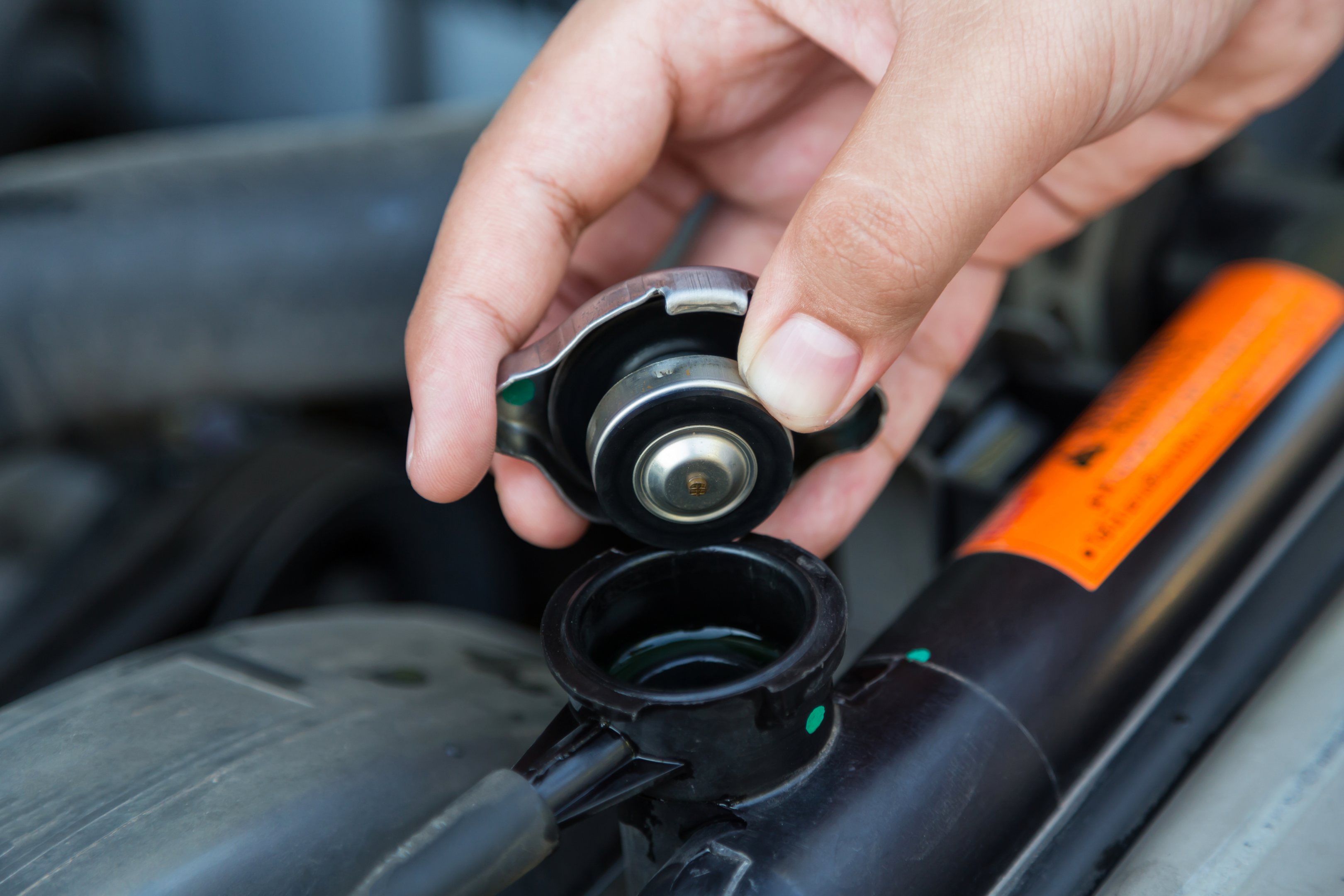
Replacing the Radiator Cap
If your radiator’s been acting up, it might be time to replace the cap for a better seal and improved performance. Replacing parts of your radiator is generally easier than replacing the entire radiator, so replacing the cap is usually a straightforward process.
To begin, you’ll need to make sure that the engine’s cool before removing any parts. Then, remove the old cap and inspect it for signs of wear or damage. If necessary, clean out any debris from around the cap area. You’ll also want to check that all connections are secure before adding a new one.
Next, flush out your coolant system and test for any leaks in order to ensure that everything is functioning properly before adding in a new cap. Fill up your radiator with fresh coolant according to instructions on its packaging and make sure that no air bubbles remain in the system by using a funnel or tube when filling it up.
After you’ve filled up the radiator with coolant, carefully place in a new radiator cap and tighten it until secure.
Inspecting the Radiator Hose
Regularly inspecting your vehicle’s radiator hoses can help you catch potential issues before they become costly repairs.
Examine the hoses for any signs of wear and tear, and test pressure to ensure it is in line with manufacturer specifications.
If there is a drop in pressure, then this could indicate a leak somewhere within the system.
Check all clamps and seals around the hoses as well to make sure that they’re not loose or damaged, looking for any cracks or other damage that may have occurred over time.
Be sure to remove any debris from the area too, as this can interfere with proper cooling performance if left unchecked.
Finally, keep an eye out for any fluid leaks coming from the hose itself – these can be indicative of a faulty seal or worn out hose that needs replacing soon for optimal performance.
Checking the Water Pump
Examining the water pump is essential to ensure smooth operation of the cooling system and prevent costly repairs. It’s important to thoroughly evaluate pressure levels, test valves for proper functioning, inspect fins for wear or damage, examine gaskets for leaks, and check clamps for tightness.
Examine gaskets at least once a year as well. Look for signs of cracking or leaking around bolt holes, which may indicate problems with heat transfer caused by an inadequate seal between components.
Finally, checking clamps ensures secure connections between parts so that coolant does not escape from its designated pathways. Loose clamps will result in reduced system performance. Use a torque wrench when tightening clamps to make sure they are tightened correctly without being over-tightened, which can cause damage to other parts within the system as well as leakages from unintended areas within your radiator hose assembly.
Replacing the Thermostat
Replacing the thermostat is a crucial step in maintaining the efficient operation of the cooling system. It ensures proper coolant flow and temperature regulation.
To start, you should test the temperature of your radiator to determine whether it needs to be replaced. You can do this by inspecting its seals and valves to ensure they’re functioning properly. Avoiding leaks is also important, as any cracks in the radiator will lead to water loss and overheating.
After testing, you can then replace the thermostat with one that meets your needs while still maintaining heat within your engine’s optimal range. When replacing a thermostat, it’s important to take precautions such as draining all remaining coolant from the radiator before disassembling it. This will help prevent any further damage or contamination from occurring during installation.
Additionally, you should double-check that all nuts and bolts are tightened securely into place when reassembling your new thermostat so that there are no leaks. Once everything is put back together correctly, you’ll want to make sure that the temperature readings of your car’s cooling system are accurate according to manufacturer specifications. If not, then additional adjustments may need to be made for maximum efficiency and performance levels.
Bleeding the Radiator
Regular maintenance is key to keeping your cooling system performing at its best, including bleeding the radiator. Bleeding the radiator involves releasing trapped air in a hot water heating system, which helps keep water pressure and coolant levels even throughout the system.
You should hear air and some water escape when you do this. Keep an eye out for any changes in water pressure or coolant levels while doing this too. Once finished, be sure to fill up any reservoirs where applicable before turning everything back on again and scheduling a regular radiator flush every few years for optimal performance.
Refilling the Coolant
Keeping your coolant levels topped up is essential for ensuring that your heating system runs smoothly and efficiently. Refilling the coolant in your radiator should be part of your regular maintenance routine, as it helps to prevent blockages from forming and will help you identify any issues with the drain valves.
If a coolant leak is occurring then your radiator will not be able to perform properly. We strongly suggest the following tips for refiling your coolant.
Here are some tips to keep in mind during the refilling procedure:
Choose a coolant type specifically designed for radiators;
Make sure all air has been properly removed by bleeding technique;
Use distilled water only when topping off levels;
Ensure that drain valves are fully closed before refilling.
Without your cooling system being topped off there is a good chance it can damage your radiator
The good news is that refilling coolant is easy enough to do yourself if you have basic DIY skills and access to some tools.
Frequently Asked Questions Regarding A Car Radiator Leak Fix
Is it difficult to identify the cause of a radiator leak?
Identifying the cause of radiator leaks can be difficult because there are multiple potential causes. These can range from clogged hoses, corroded pipes, air locks, and malfunctioning thermostats to low levels of coolant.
It’s important to properly diagnose the issue in order to determine the best course of action for repair or replacement. A qualified technician will be able to examine your system and accurately identify where the leak is coming from, saving you time and money in the long run.
It can be useful to have a coolant system pressure tester in order to find out if you have a leaking car radiator. A coolant system that is leaking coolant cannot function properly and will cause damage to surrounding components.
Are there any preventative measures to avoid radiator leaks?
Regular maintenance and preventative measures are important when it comes to avoiding radiator leaks.
Investing in sealants and corrosion detection can help you identify potential problems before they occur, saving you time and money.
Estimating the cost of any needed repairs or replacements is also a good idea, as well as keeping an eye on temperature regulation – if your car is running too hot, it could be a sign that something isn’t right with your radiator.
Taking these proactive steps will help ensure that your radiator remains leak-free for years to come. It may also be a good idea to purchase a stop leak product which can solve most leaks, while this is not a way to permanently repair the issue, it can provide a temporary solution.
Is it necessary to replace the thermostat when replacing a radiator?
Replacing your radiator is an important job, and it’s essential to consider all potential factors that can be associated with the repair.
One of these factors is whether or not you should replace the thermostat along with the radiator. Generally, if there are no signs of coolant leakage around the thermostat housing, then a replacement may not be necessary. However, it’s important to check for any sealants that may have been used in order to fix a previous leak, as well as make sure that coolant levels remain consistent throughout the system.
Additionally, be sure to inspect other parts near your radiator’s location for signs of wear and tear or leaks that may need attention. Finally, contact a professional to detect any leaks and get an estimate on repair costs before making any decisions about replacing your thermostat.
Conclusion
It’s important to take the time to fix a radiator leak properly. It may seem like a hassle, but it’s essential for the health of your car.
Assess the damage, identify the cause, and check for corrosion. Tighten connections and replace any parts that need replacing.
You can also bleed the radiator and refill it with coolant to ensure everything is running smoothly. With patience and attention, you can easily get back on the road without worrying about any further issues. It would also be advantageous to browse a list of commercial products designed to temporarily fix radiator issues.
Ultimately you will need to visit a local auto parts store or contact a mechanic to solve major issues with your Radiator.

It wasn’t that long ago when electric cars were nothing more than a joke. A toy for the wealthy or the environmentally conscious. But now, electric cars are a serious contender in the automotive market, and there are some great options available for sale. You can save money on fuel costs by choosing an electric car over a gas-powered car. Electric cars are also better for the environment, as they produce zero emissions. If you’re looking for a green and cost-effective transportation option, an electric car is a way to go.
An electric car is a great way to reduce your carbon footprint and save money on fuel. Check out our list of the best electric cars for sale.
Tesla Model S
The Tesla Model S is one of the best electric cars for sale. It has a range of up to 300 miles, a top speed of 155 mph, and can go from 0 to 60 mph in just 2.5 seconds. It also has a large trunk and plenty of passenger space, making it a great choice for a family car. The Model S is also one of the safest cars on the road, with a 5-star safety rating from the National Highway Traffic Safety Administration.
BMW i3
If you’re looking for an electric car that’s both stylish and environmentally friendly, the BMW i3 is a great option. With a range of around 100 miles on a single charge, it’s perfect for city driving. And thanks to its lightweight construction and low center of gravity, the i3 is also surprisingly fun to drive. Plus, with a starting price of just over $30,000, it’s one of the most affordable electric cars on the market.
Affordable Electric Cars
If your budget is the primary barrier to entry when it comes to buying an electric car, then this list is where you want to be. These affordable electric cars range in price from $29,000 to $35,000 and below, and offer a more than adequate experience for the novice user or car commuter. All of these cars may qualify for a tax credit of up to $7,500.
All models listed below have average ranges of 100-200 miles and charge rates of 6-8 hours on a standard 120v outlet and 3-4 hours on a Level 2 charger.
Chevrolet Bolt EV
The Chevrolet Bolt EV is one of the best electric cars for sale. It has a range of over 200 miles and can be charged in just over an hour. It’s a great choice for those who want an electric car that’s both affordable and reliable.
The Bolt EV remains the king of affordable electric cars purely due to its range capability. With 200 miles of range, the Bolt outperforms every other electric car on the market, even when using the speedier Ecotality charging stations.
Nissan LEAF
The Nissan LEAF is one of the best electric cars for sale. It has a range of up to 150 miles on a single charge, and its price tag is very reasonable. The LEAF also comes with a host of features that make it a great choice for anyone looking for an electric car.
Electric Cars By Manufacturer
These cars did not make our list of the best or most affordable electric cars, but they are worth mentioning!
Dodge Electric Muscle Cars
- Charger Daytona SRT
BMW Electric Cars
- BMW i3
- BMW i4
- BMW i7
- BMW iX
Honda Electric Cars
- Honda Fit EV
- Honda Clarity Electric
Ford Electric Cars
- Ford F-150 Lightning
- Ford Mustang Mach-E
- Ford E-Transit Cargo Van
Kia Electric Cars
- Kia EV6
- Kia Nero EV
Hyundai Electric Cars
- Hyundai Ioniq Electric
- Hyundai Ioniq 5
- Hyundai Kona Electric
Toyota Electric Cars
- Toyota bZ4X
Nissan Electric Cars
- Nissan ARIYA
- Nissan Leaf
Volvo Electric Cars
- Volvo C40 Recharge
- Volvo XC40 Recharge
Volkswagen Electric Cars
- Volkswagen ID.4
- Volkswagen ID.Aero
- Volkswagen ID.Buzz
Mercedes Electric Cars
- Mercedes EQB
- Mercedes EQE
- Mercedes EQS
Subaru Electric Cars
- Subaru Solterra
Where To Find Used Electric Cars For Sale
Virtually every automaker offers at least one model of electric vehicle, and they’re getting more affordable by the month. There are a variety of electric cars for sale, and if you’re interested in buying used, you can find some great deals on used electric cars for sale, too.

Pre-ordering is becoming more common as customers and dealers discover the benefits of placing special orders instead of settling for what’s on the lot. Louisville INFINITI is no exception, and we’re here to explain why having to wait a month or two for your new INFINITI Q50 might be the best thing to have happened.
Factory Ordering Has Become The New Norm In Auto Sales
Read the rest of this entry »
When you want performance, safety, and luxury in one beautiful package, consider the 2020 INFINITI QX60 as your vehicle of choice. This luxury SUV boasts all the most luxurious finishes and features inside and out, and it even won the Top Safety Pick award from the IIHS. If that sounds like what you need in your life, you can bring this car home in a hurry. You just have to select between its excellent trim packages to find your perfect build. Here’s what you need to know to make this important decision.

INFINITI is a luxury brand that has managed to capture a niche market of drivers because of its incredible value over time. Instead of losing its luster along the way, INFINITI vehicles actually get more appealing to their owners over time — a feat that isn’t so easy to achieve. Essentially, INFINITI wants to improve, but they don’t want to fix something that isn’t broken. The 2018 INFINITI Q50 may not be wildly different from its predecessor, but it manages to score a few extra points in the most important areas for drivers today.

-2017 Model Year Shown
The brand INFINITI has long been synonymous with refinement, but if early looks are accurate the 2018 QX50 will bring a new level of excitement and refinement to the American roads. This new crossover has sophistication and good looks, but perhaps the most significant features are found in the advanced technology such as a variable compression engine, semi-autonomous driving and exceptional fuel economy.


